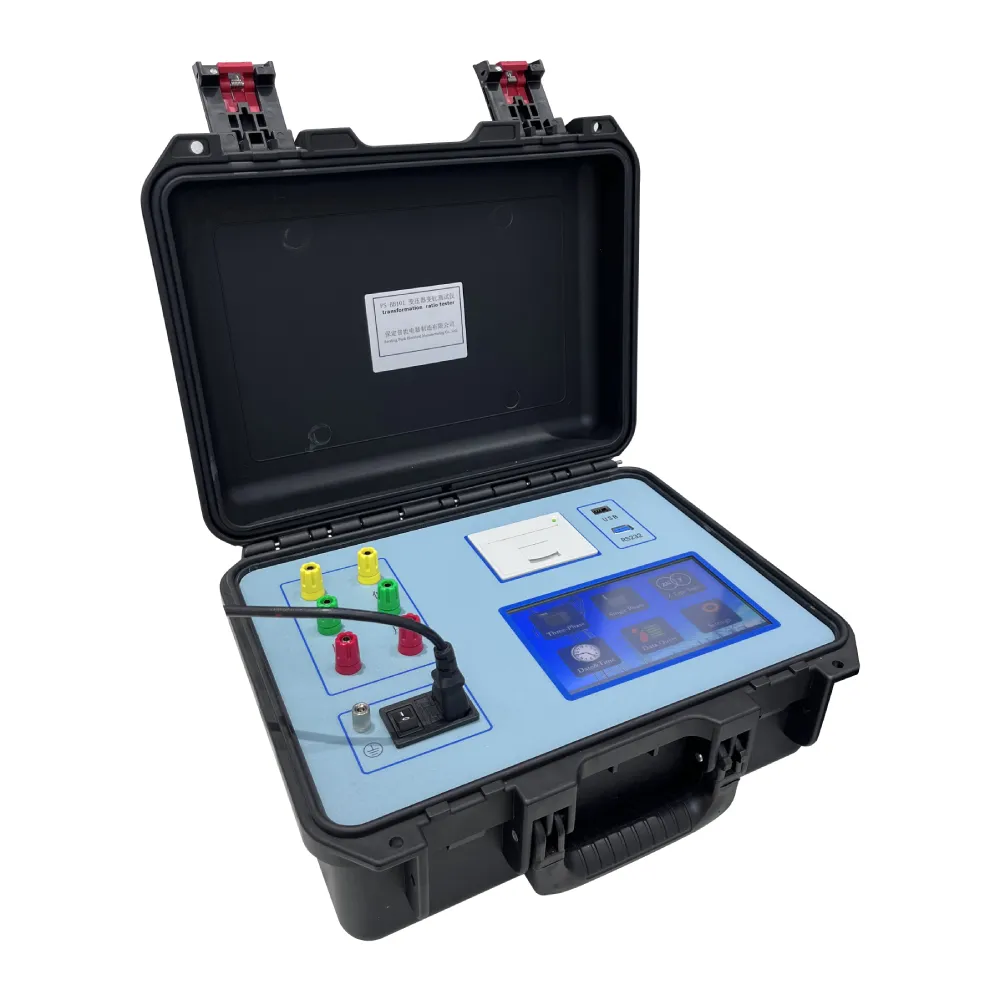 English
English


Tap Changer Control Solutions for Power Transformers
Tap Changer Control Ensuring Voltage Regulation in Power Systems
Tap changers are essential devices used in transformers to manage voltage levels in power systems. They allow for the adjustment of the transformer turns ratio, thereby maintaining a stable output voltage despite variations in load conditions or input voltage fluctuations. The concept of tap changer control is critical for optimal performance and reliability of electrical networks, especially in modern grid operations.
Types of Tap Changers
There are primarily two types of tap changers on-load tap changers (OLTC) and no-load tap changers (NLTC). OLTCs can adjust the tap position while the transformer is energized, making them particularly valuable in applications where voltage stability is crucial, such as in industrial plants and large substations. NLTCs, on the other hand, require the transformer to be de-energized for adjustment, typically used in smaller or less critical applications.
Importance of Tap Changer Control
The primary function of tap changer control is to maintain a constant voltage level at the transformer’s output
. This is vital in preventing voltage fluctuations that can lead to equipment malfunctions or inefficient operation of electrical appliances. For example, in industrial settings, machinery often requires specific voltage levels to operate efficiently, and any deviations can result in increased operational costs or even damage.tap changer control

Moreover, tap changer control plays a significant role in enhancing the reliability and efficiency of the power system. By ensuring that voltage levels remain stable during varying load conditions, tap changers contribute to a more balanced and resilient grid. This is especially important in regions with renewable energy sources, where generation can be inconsistent, leading to potential voltage instability.
Automated Control Systems
Advancements in technology have led to the development of automated control systems for tap changers. These systems can monitor voltage levels in real-time and automatically adjust the tap position as needed. Such automation reduces the need for manual intervention, thus minimizing human error and improving response time to voltage changes. Modern tap changer control systems often integrate with supervisory control and data acquisition (SCADA) systems, allowing for more comprehensive management of the power grid.
Challenges and Maintenance
While tap changers are robust devices, they still face challenges such as wear and tear over time due to mechanical movements and electrical arcing during the switching process. Regular maintenance checks are essential to ensure their proper function. Issues like oil contamination or mechanical malfunctions can lead to failures, making it critical to implement preventive maintenance strategies.
In conclusion, tap changer control is a fundamental component of modern power systems, ensuring voltage stability and enhancing the overall reliability of electrical supply. With ongoing advancements in automation and technology, the effectiveness of tap changers will continue to improve, supporting the growing demands of the global energy landscape. Addressing maintenance challenges will be crucial for maximizing their operational lifespan and ensuring uninterrupted service in an increasingly complex electrical network.
-
Differences between open cup flash point tester and closed cup flash point testerNewsOct.31,2024
-
The Reliable Load Tap ChangerNewsOct.23,2024
-
The Essential Guide to Hipot TestersNewsOct.23,2024
-
The Digital Insulation TesterNewsOct.23,2024
-
The Best Earth Loop Impedance Tester for SaleNewsOct.23,2024
-
Tan Delta Tester--The Essential Tool for Electrical Insulation TestingNewsOct.23,2024





